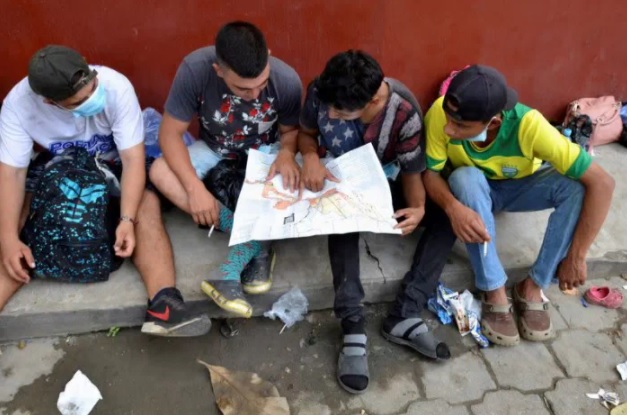by Albinson Linares
MEXICO CITY — Marian Pérez Guerra, 39, knew when it was time to leave her home country of Nicaragua.
“They started shooting at our house. That’s where we knew we had to leave,” she said, recounting the threats she constantly received following her participation in demonstrations against the government of President Daniel Ortega.
“They said they were going to kidnap me, in some cases they told me they were going to rape me, to make me disappear,” said Pérez Guerra, who left in September 2018 and is now living in Mexico City.
In recent years, Mexico has ceased to be a transitory country for people heading to the United States, increasingly becoming the final destination of an important migratory flow. Between 2014 and 2019, the number of asylum applications registered in the country increased from 2,137 to 70,418 — an increase of more than 3,000 percent, according to the Mexican Commission for Refugee Assistance, or COMAR.
“You arrive very beaten, and you have to learn to transform the pain,” Pérez Guerra said about her new life. “That is why I will always be grateful to Mexico for giving me refuge.”

Pérez Guerra is part of a massive global tide: In 2020 there were 82.4 million registered refugees and internally displaced persons, according to the most recent report by the United Nations High Commissioner for Refugees.
This is a record figure, more than double the almost 40 million of a decade ago. It is comparable to Germany’s entire population leaving the country.
In 2013, Mexico registered only 1,296 applications for asylum. Four years later, the number was 14,619, and by 2019, the government had received over 70,000 requests. The total figure for 2021 is projected to be between 90,000 and 100,000 asylum applications.
Due to its size and economic opportunities, Mexico has been able to handle the migratory flow driven by the successive crises in Central American countries, according to Andrés Ramírez Silva, who heads COMAR.
“The country has the capacity to receive them. However, that poses a significant challenge for us because we are prepared to serve a certain number of people, and, suddenly, it rises very quickly until it becomes something emergency,” said Ramírez, who worked for more than two decades at UNHCR and is an expert on migration policies in the region. “That’s why there’s not enough in the budget or in operational capacity. It’s a phenomenon that is occurring in many countries, not only in Mexico.”

As part of Mexico’s asylum process, a person must remain in the state where the application is made during the time the process lasts, which, in normal times, should range between 45 and 90 business days. However, due to the Covid-19 pandemic, COMAR announced in March 2020 that it was suspending the deadlines for these processes. This has generated multiple complaints from migrants who are trapped in places where they cannot work, in large part because they lack adequate documentation.
“The vast majority of people enter from the south, but the state that has the highest percentage of the border is Chiapas, specifically the Tapachula part. They apply there and, by law, they have to stay there,” Ramírez said. “That is the paradox because a bottleneck is generated, and in Chiapas, which is one of the poorest states, 71 percent of the applicants remain there.”
This has been the experience of Katsury, a 24-year-old trans woman who is only being identified by her first name for her protection. She fled Guatemala after she started getting threats for accusing her partner of physical and psychological abuse, leading to his imprisonment. She said the beatings and abuse affected her mental health and she attempted suicide twice. After the threats, she fled and requested protection at the Mexican border in January.

“When I arrived, I was desperate. I told the military that I needed a shelter and they let me pass, but you have to understand that COMAR is overwhelmed in Chiapas. They don’t have the capacity,” she said.
“When they told me that they could only give me a regional permit, that I had to stay there, I had to keep running. Nobody understands that there they can kill me because that is next to Guatemala and anyone can pass armed,” Katsury said fearfully.
With the help of UNHCR, Katsury began her process in Mexico City but has yet to receive a response due to multiple bureaucratic delays. She is still experiencing depression, but she said she is happy to be able to work as a hairstylist, her favorite trade, and hopes to stay in the country.
“I feel happy because here my rights have been recognized. That does not happen in Guatemala,” Katsury said. “If we had an adequate government that helps the population and that the economy is fine, without violence, I think we would not migrate to another country.”
CLICK HERE FOR FULL ARTICLE BY ALBINSON LINARES ON AOL


